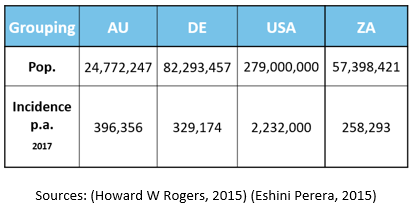Non-Melanoma Skin Cancer or the unknown relative of Melanoma
Welcome dear readers to our blog about Non-Melanoma Skin Cancer.
Did you know Non-Melanoma Skin Cancer or NMSC is the most common cancer in the world? Or that it is the cancer for which millions of people around the globe are treated each year? You probably know someone who has had a basal cell carcinoma or a squamous cell carcinoma
In short, the probability that you have already been in contact with someone who has/had NMSC is high, even if you may not be aware of it.
In medicine, skin cancers are divided into two main groups:
Melanoma and Non-Melanoma skin cancer. Melanomas arises from melanocytes: cells that contain the pigment melanin, which is responsible for the tanning of our skin when it is exposed to the sunlight. At the same time it protects our DNA from UV radiation damage. These tumours have an heterogeneous colour, mostly being dark coloured. The spot or nodule shows an asymmetric shape with extensions, indentations and/or structural breaks. Differentiation from benign changes, such as moles or age warts, are only possible with dermoscopic examination or biopsy excision by your doctor.
In contrast, Non-Melanoma skin cancer has its origin in the epidermis. The most common variants are those which develop from basal cells or squamous cells. These are also known as basaliomas or spinaliomas; Basaliomas often appear as pale nodules, with small blood vessels visible in them, or more extensive scar like growths that are difficult to differentiate from healthy tissue. Spinaliomas have a wart-like growth or may resemble ulcers. The first steps to get a diagnosis is also a dermoscopic examination and, if necessary, a biopsy.
To give the article some more depth and information, here are a few facts and figures about Non-Melanoma skin cancer:
How often is the most common cancer in the world diagnosed?
Current studies and figures from institutes indicate, for example, for the USA an annual rate of new cases (Incidence) of 3.3 million people in a population of 320 million, for Germany 330,000 in a population of 82 million and for the country with the highest rate of new cases in relation to the population, Australia, 396,000 people in a population of round about 25 million. So every country have different numbers and there is no actual global estimation. (Howard W Rogers, 2015) (Cancer Society, 2018) (Eshini Perera, 2015)
How good are the chances of remission?
Basically, you can say good. As with in any cancer, it is important to diagnose it as early as possible. To do this you should regularly examine your skin for changes, and if you notice any abnormal changes visit your dermatologist or GP immediately. Non-Melanoma skin cancers can be treated with a wide range of different therapies. In most cases, a complete remission is achieved, meaning that the same cancer does not reappear at the same location. However, it has been shown that people who have already had Non-Melanoma skin cancer have a higher risk of developing a new skin cancer throughout their life. (Marcil & Stern, 2000)
How many people die from Non-Melanoma Skin Cancer?
Compared to other cancers, relatively few people die from Non-Melanoma skin cancer. The 5-year survival rate ranges from 96% to 100%, depending on the study and source. The survival rate in this case indicates how many of the patients who have a confirmed diagnosis of Non-Melanoma skin cancer are still alive 5 years after diagnosis. (Cancer Society, 2018)
Why is Australia the most affected country?
The most important risk factor for Non-Melanoma skin cancer is UV radiation. Some of this radiation is absorbed by the ozone layer, but in Australia, the ozone layer is particularly thin. Therefore, a relatively large amount of UV radiation reaches the earth’s surface.
A long-term exposure to solar light (UV radiation) can damage the DNA from your skin cells, which can cause cells to start growing out of control, leading to skin cancer.
What does Non-Melanoma skin cancer look like?
Here you can see a selection of lesions that have been documented. Every person is different and so is every tumor. Therefore, you should always check with your doctor any changes in your skin.
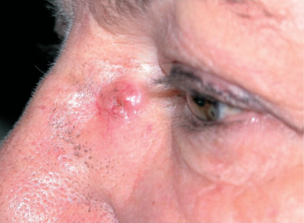
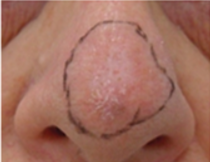
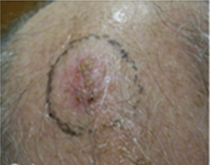
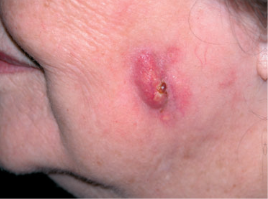
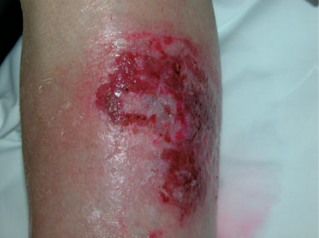
How could this type of cancer be treated in detail? How can I prevent it? What are the risk factors? We will address these and many other topics and questions in further posts!
Stay informed and subscribe to the blog. Follow us on social media to be even closer to the latest developments in the field.
References
Eshini Perera, N. G. (2015). Incidence and prevalence of non-melanoma skin cancer in Australia: A systematic review. Australian Journal of Dermatology, pp. 256-267.
Howard W Rogers, M. A. (2015). Incidence Estimate of Nonmelanoma Skin Cancer (Keratinocyte Carcinomas) in the U.S. Population, 2012. Journal of the American Medical Association, pp. 1081-1086.
Krebsgesellschaft, D. (2018). Onko Internetportal:
Marcil, I., & Stern, R. S. (2000). Risk of Developing a Subsequent Nonmelanoma Skin Cancer in Patients With a History of Nonmelanoma Skin Cancer. Evidence-Based Dermatology: Original Contribution, pp. 1524-1530.


